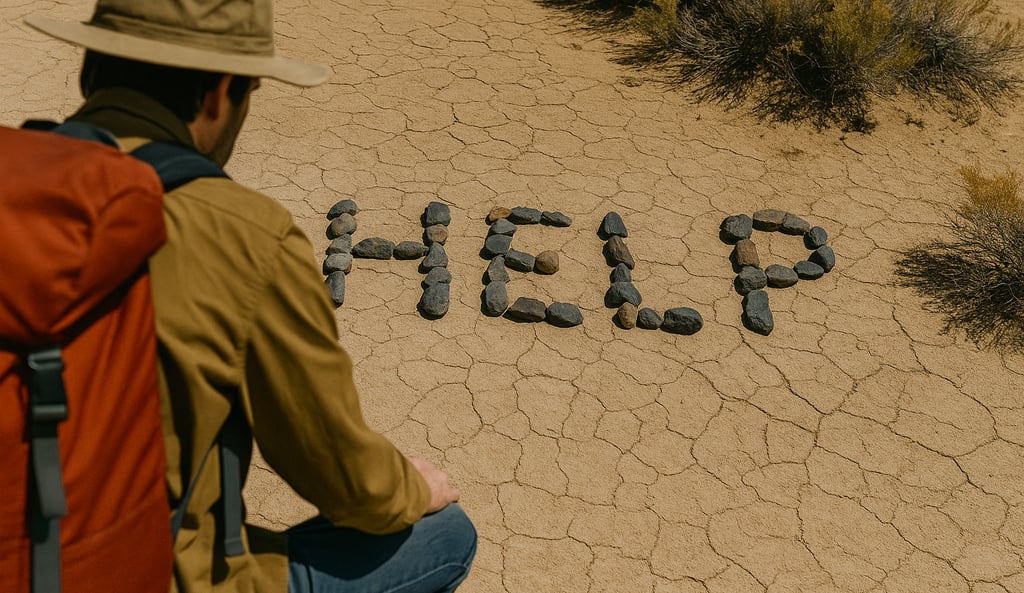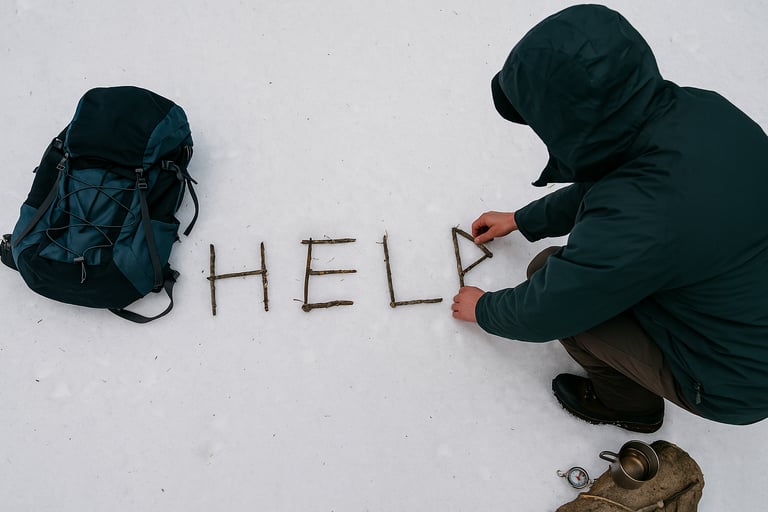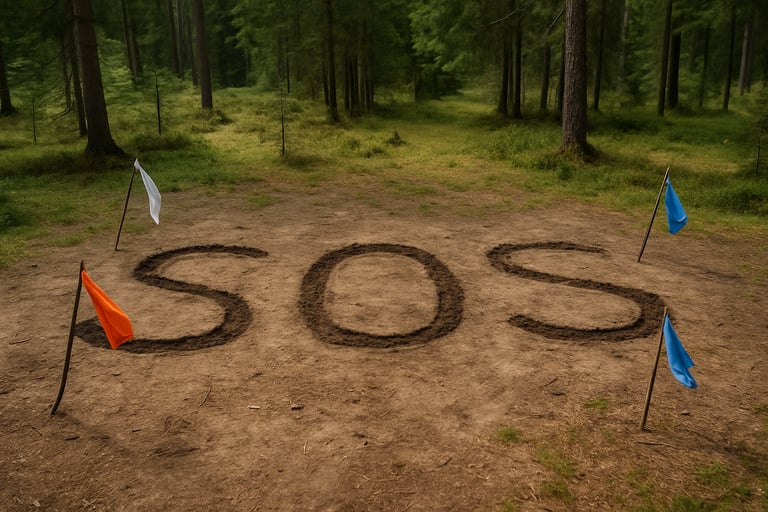Writing Messages for Help: How to Use Textual Signals to Call for Rescue
Learn how to write effective textual rescue signals in the wilderness. Discover the best survival words, tips for building large visible messages, and where to place them for maximum visibility.


Writing Messages for Help: How to Use Textual Signals to Call for Rescue
Survival often depends on your ability to be seen and understood. While signaling devices and mirrors can catch attention, sometimes the most effective way to communicate distress is through clearly written words. Whether scratched in the dirt, spelled out with rocks, or drawn with charcoal on a surface, textual rescue signals can convey crucial information to rescuers flying overhead or passing by on foot.
Let’s explore how to use written messages in the wilderness to increase your chances of getting rescued. This method is especially effective when combined with building signal structures that catch the eye from above or afar.
Why Textual Rescue Signals Matter
Text-based emergency signals are especially useful when you don’t have electronics, flares, or mirrors at your disposal. They’re silent, persistent, and easily understood. Rescue teams are trained to look for clear messages like “HELP,” “SOS,” or “NEED FOOD.” When visibility is good and you’re in an open area, textual signals can be one of the most effective ways to catch attention.
The key is making the message large, legible, and visible from a distance. Use high-contrast materials against the background. For example, dark branches on snow or light rocks on dirt. Also, consider where to place the signal — open areas like beaches, clearings, or ridgelines are ideal.
What to Write: Simple, Universal Messages Work Best
When it comes to survival, less is more. Keep your words short, clear, and instantly recognizable. SOS is the international distress signal and is universally understood. Other effective messages include HELP, NEED WATER, or INJURED. Avoid slang or abbreviations, rescuers might not understand them, and time is critical.
Don’t worry about grammar or full sentences. Clarity is the priority. You want the message to be readable from the air or afar. Block letters are better than cursive, and spacing between words makes your signal easier to read quickly.
How to Build a Strong Textual Signal in the Wild
Start by choosing a flat, open space where your message will be easily visible from above. Use contrasting materials - dark rocks on light soil, or strips of bright clothing on greenery. Make each letter as large as possible, ideally 6 to 10 feet tall. Bigger is always better when trying to signal an aircraft.
If you're on snow, use branches, gear, or even stomped footprints to create your letters. On sand or dirt, you can dig or scrape out the letters with a stick or your hands. Just make sure the shapes are crisp and deep enough to create shadows. Bright sunlight will naturally emphasize contrast, especially when viewed from above.
Letters like X can also be used to indicate danger or a need for immediate assistance. If you have limited time, even just one big SOS or HELP can be enough to get noticed.
Reinforcing the Message with Movement or Color
If you have time and materials, add color or motion to your written signal. You can do this by using flags or clothing to signal for rescue, especially items with high contrast or bright colors. For example, tie strips of fabric or gear to the edges of the letters so they flutter in the wind. Movement can help catch the eye of a passing pilot or search team.
Likewise, shiny or reflective objects nearby — such as a cooking pan or mirror — can enhance visibility. You can learn more about using reflective materials as signals to boost your chances of getting spotted during daylight hours. Even positioning yourself near the signal and waving a brightly colored item increases the chance of detection. Just remember to keep safety in mind and don’t leave your shelter or water source for too long.
Final Thoughts: Be Clear, Be Visible, and Stay Put
In a rescue situation, your number one goal is to be found. Textual signals work because they communicate clear meaning across distance and language barriers. Take the time to make your message bold, simple, and high-contrast. Once it’s built, stay nearby. Rescuers will usually search for the person behind the signal and may scan the area closely.
Don’t underestimate the power of a well-placed, well-made written message. It might just be the reason you make it home safe.




© 2025. All rights reserved About | Privacy Policy | Terms and Conditions | Affiliate Disclosure | Disclaimer


